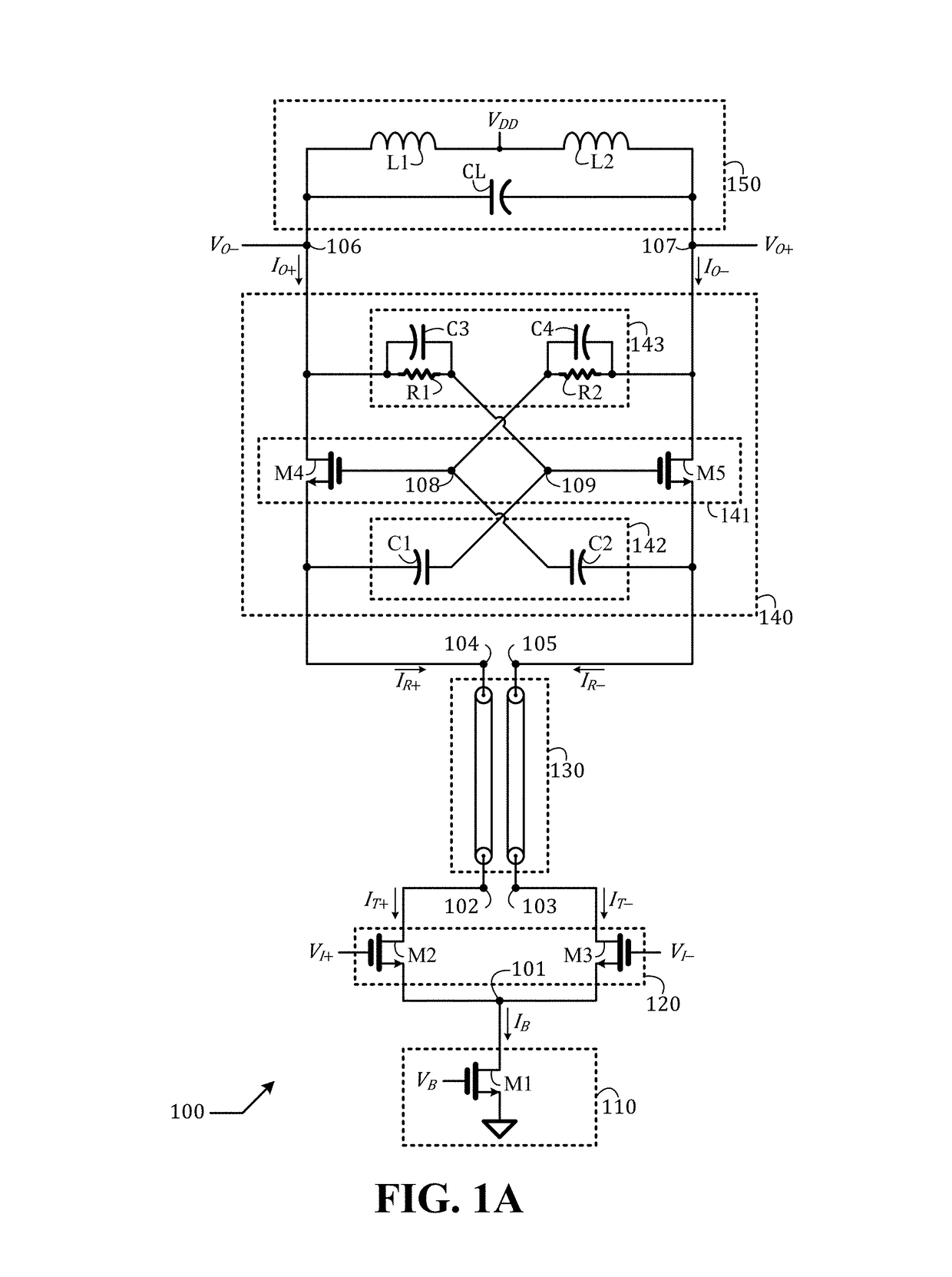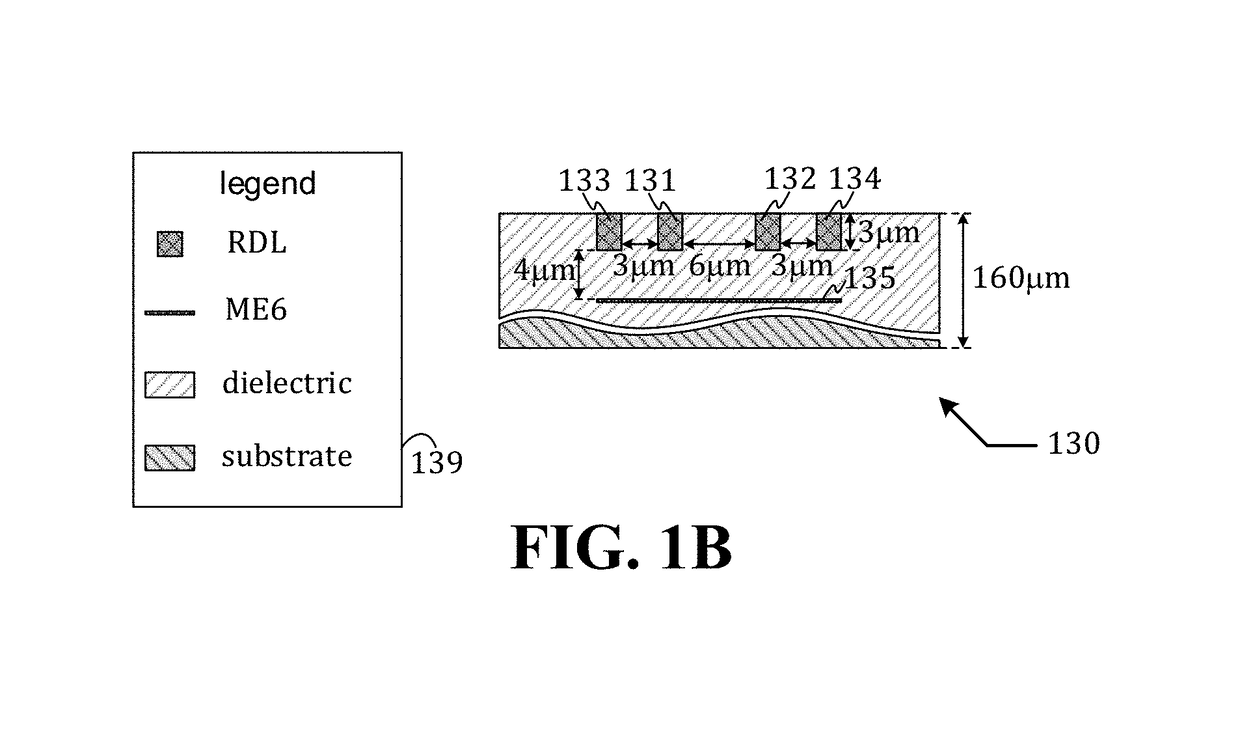Method and apparatus for high speed clock transmission
a transmission circuit and high-speed clock technology, applied in the field of clock transmission, can solve the problems of weak signal on the receiving end, difficult clock transmission, etc., and achieve the effects of boosting the output and reducing the input impedance of the current buffer
- Summary
- Abstract
- Description
- Claims
- Application Information
AI Technical Summary
Benefits of technology
Problems solved by technology
Method used
Image
Examples
Embodiment Construction
[0009]The present disclosure is directed to clock transmission. While the specification describes several example embodiments of the disclosure considered favorable modes of practicing the invention, it should be understood that the invention can be implemented in many ways and is not limited to the particular examples described below or to the particular manner in which any features of such examples are implemented. In other instances, well-known details are not shown or described to avoid obscuring aspects of the disclosure.
[0010]Persons of ordinary skill in the art understand terms and basic concepts related to microelectronics that are used in this disclosure, such as “circuit node,”“power supply node,”“ground node,”“differential signal,”“differential-pair”“voltage,”“current,”“CMOS (complementary metal oxide semiconductor),”“PMOS (P-channel metal oxide semiconductor) transistor,”“NMOS (N-channel metal oxide semiconductor) transistor,”“resistor,”“inductor,”“capacitor,”“resonant t...
PUM
 Login to View More
Login to View More Abstract
Description
Claims
Application Information
 Login to View More
Login to View More - R&D
- Intellectual Property
- Life Sciences
- Materials
- Tech Scout
- Unparalleled Data Quality
- Higher Quality Content
- 60% Fewer Hallucinations
Browse by: Latest US Patents, China's latest patents, Technical Efficacy Thesaurus, Application Domain, Technology Topic, Popular Technical Reports.
© 2025 PatSnap. All rights reserved.Legal|Privacy policy|Modern Slavery Act Transparency Statement|Sitemap|About US| Contact US: help@patsnap.com



